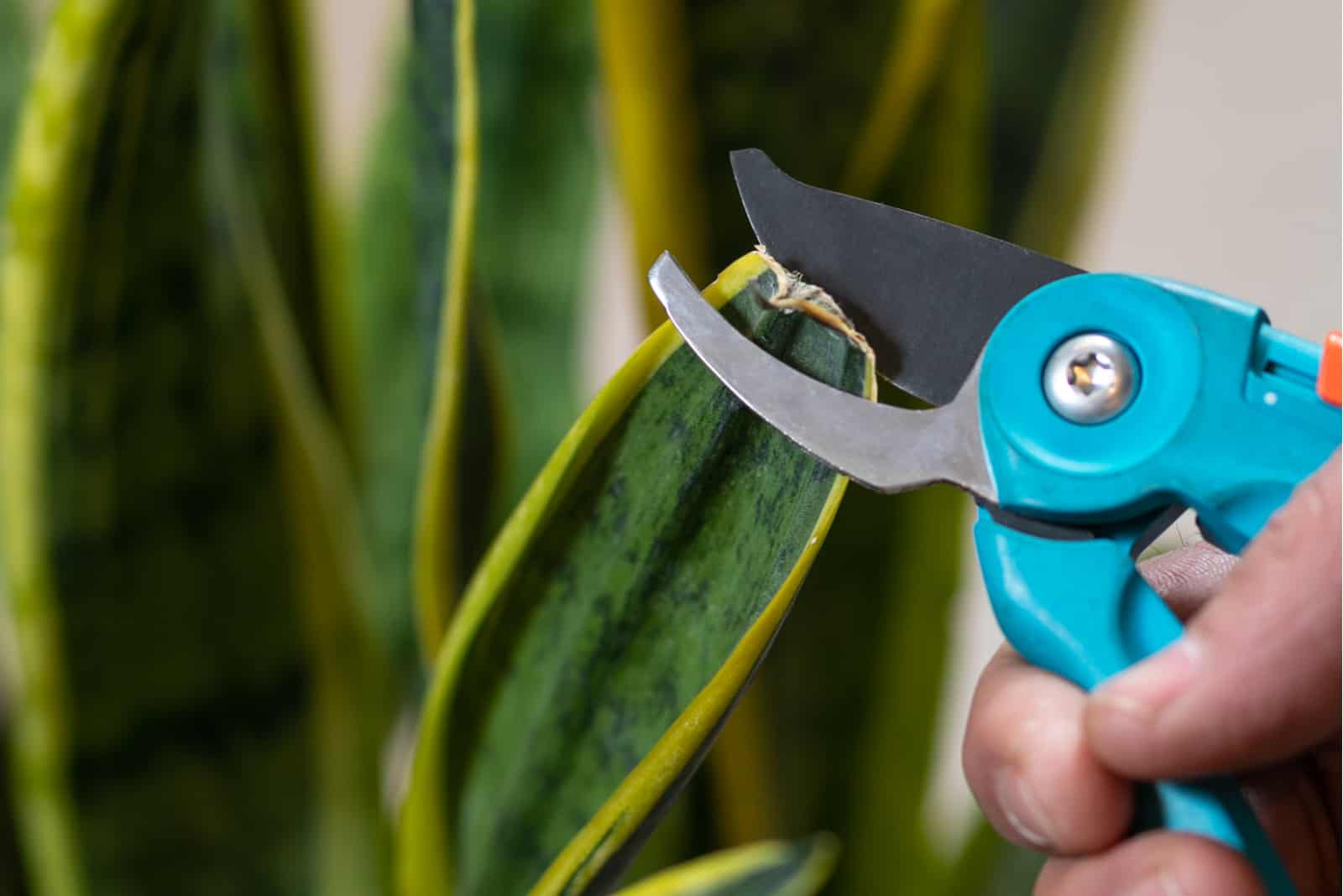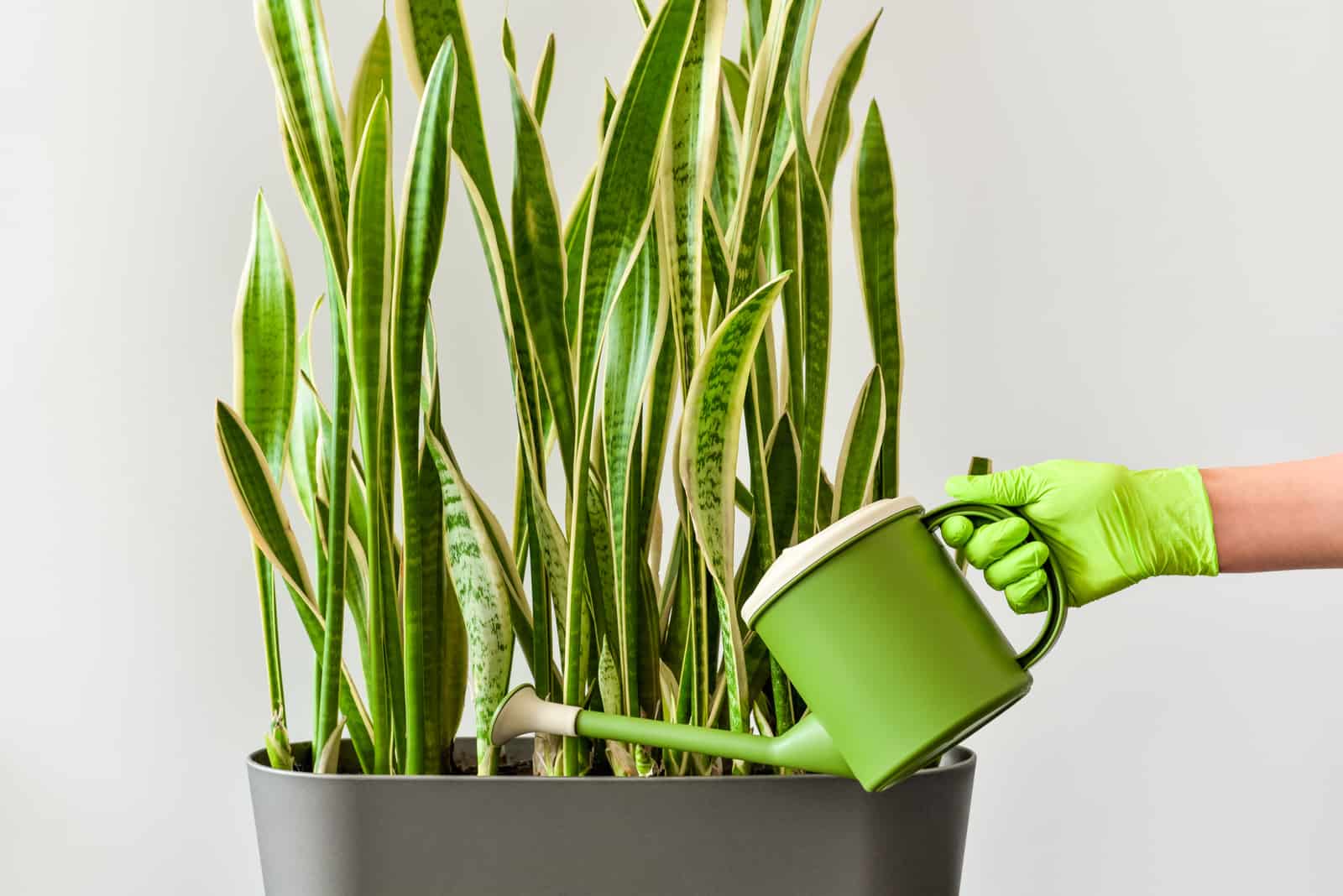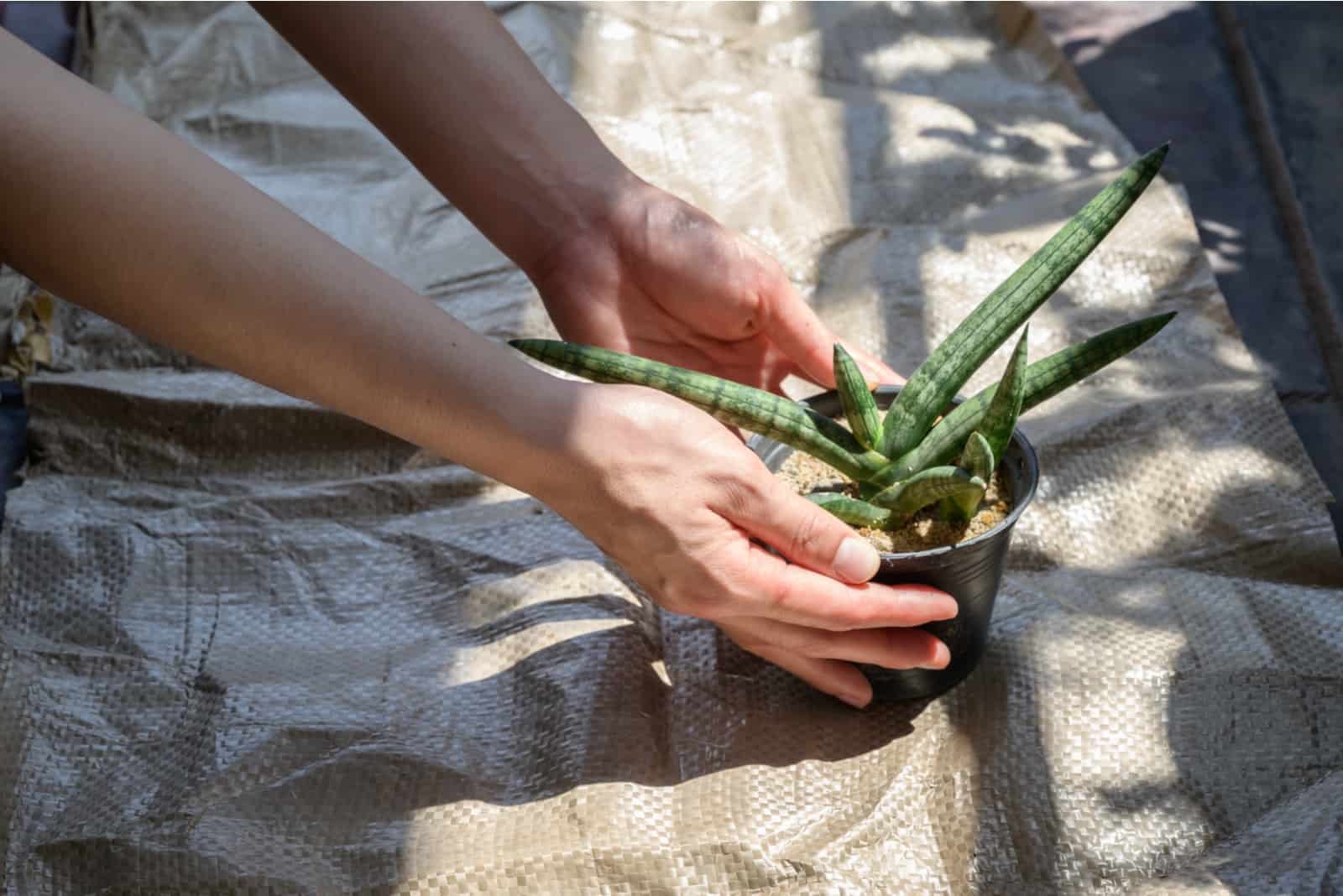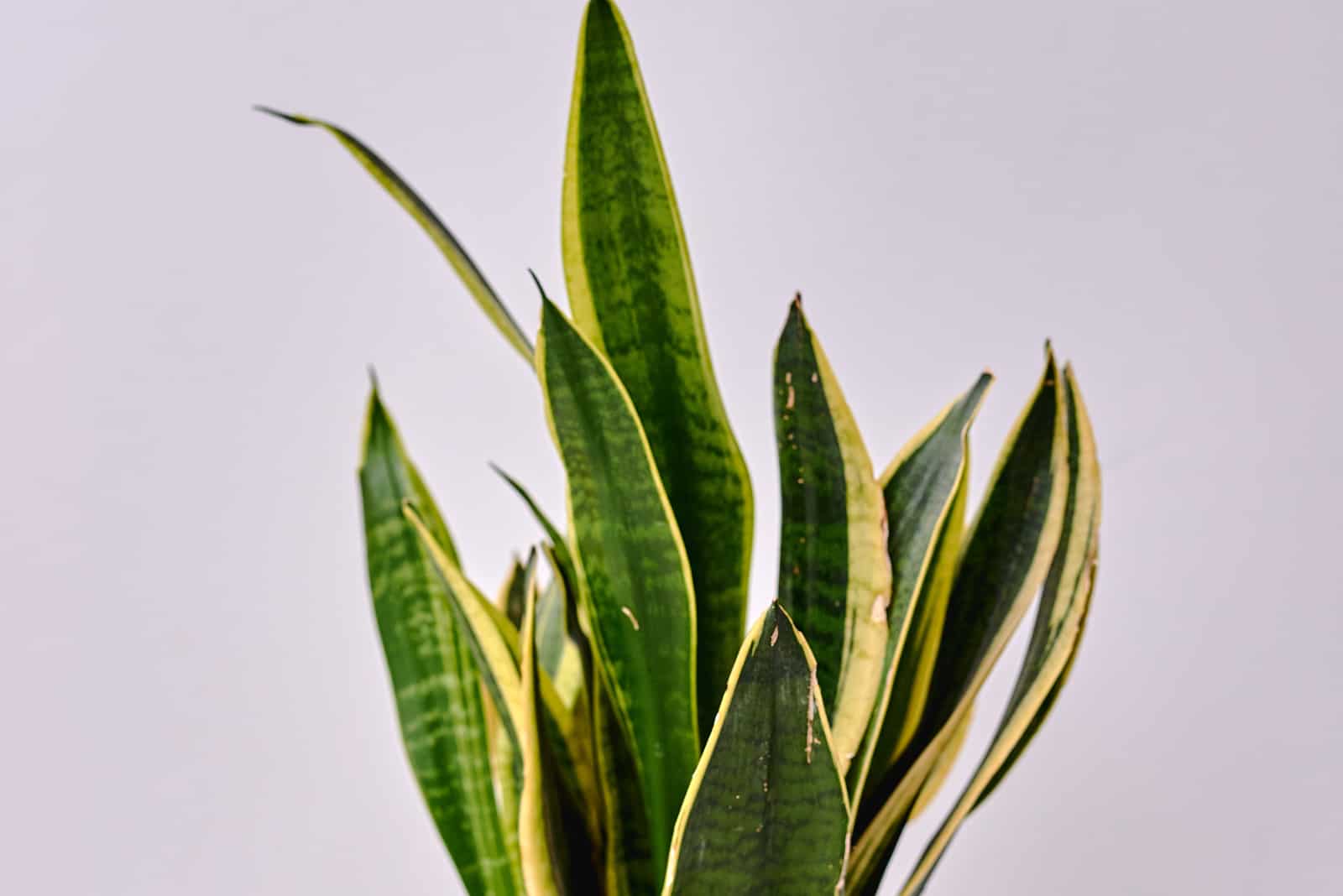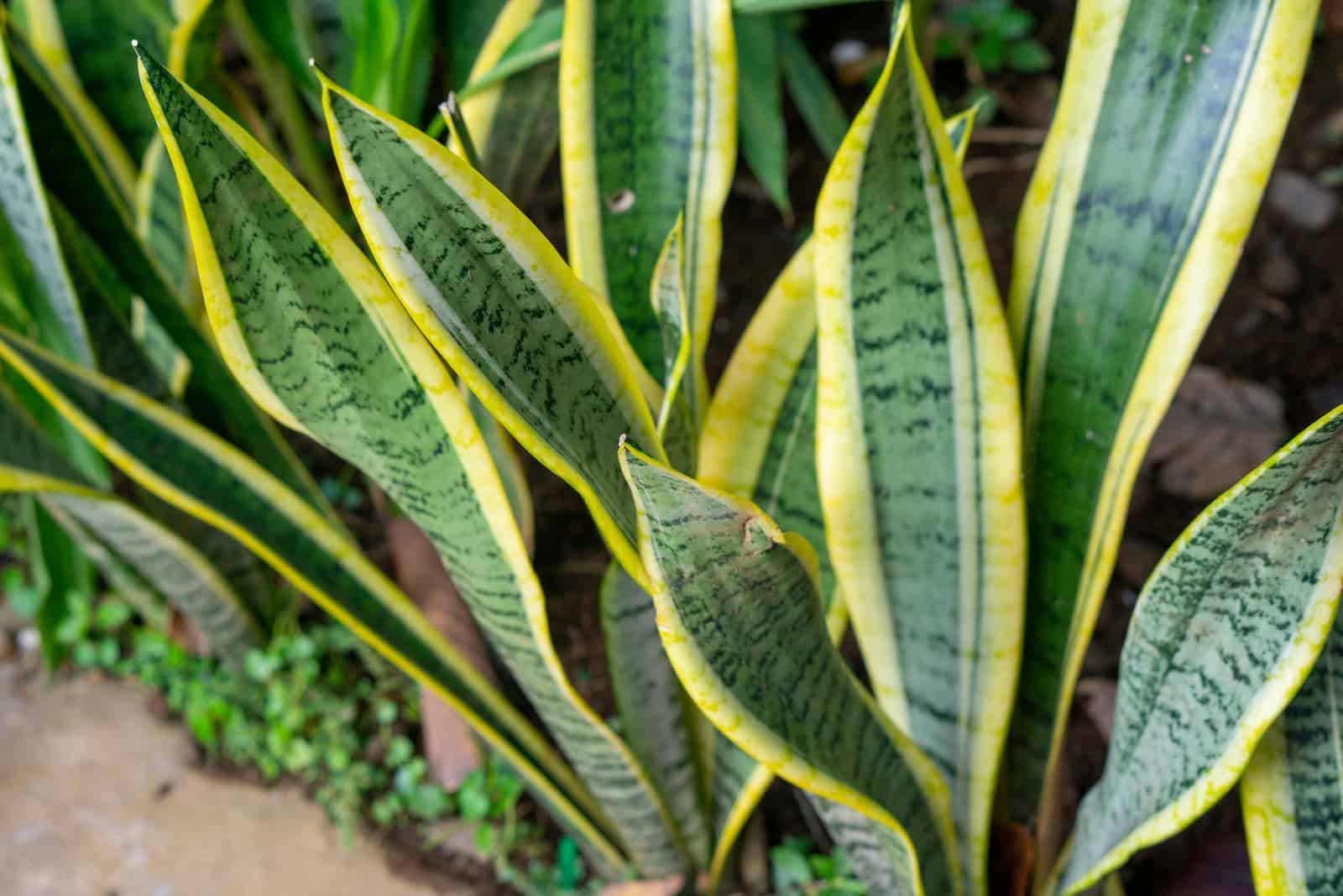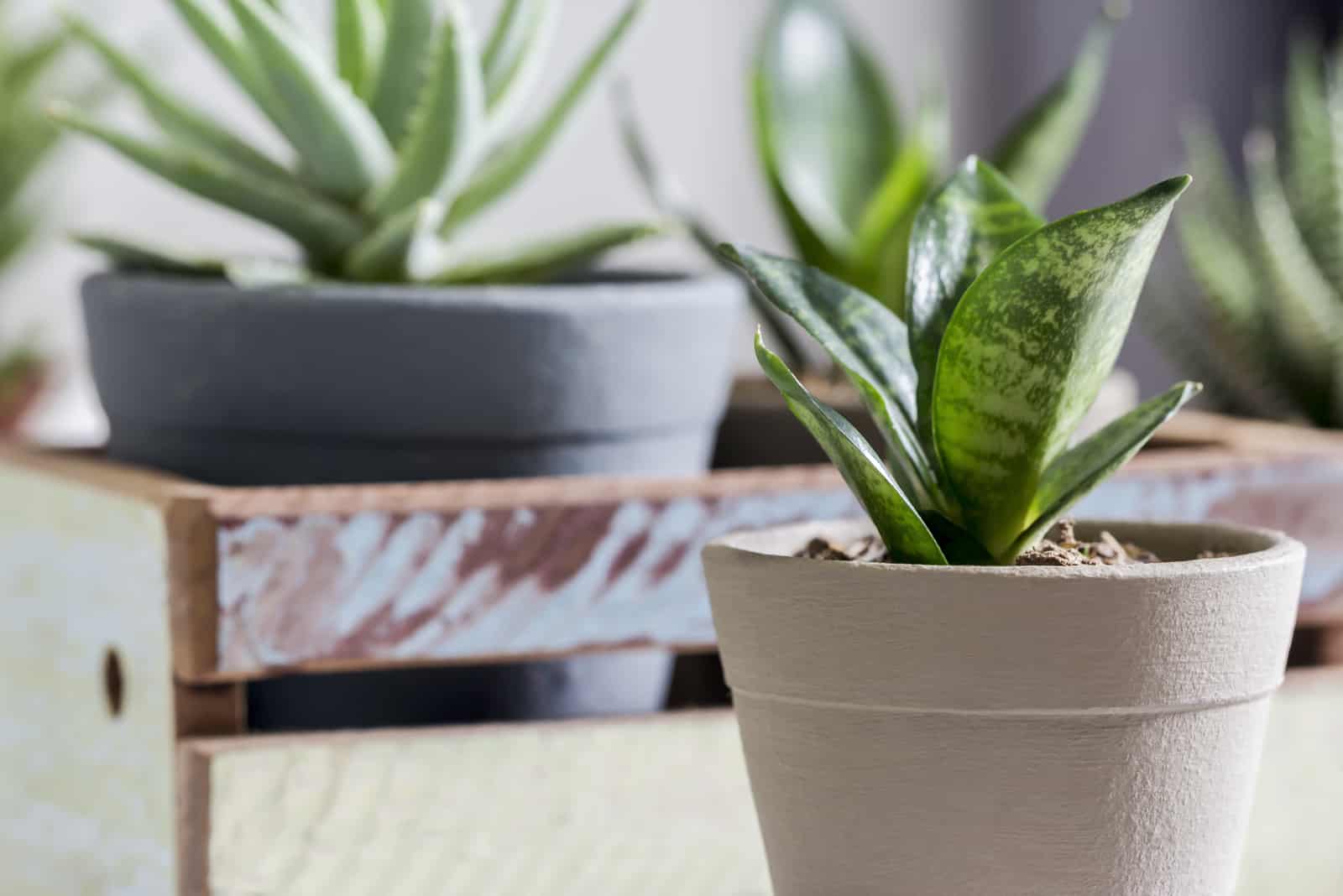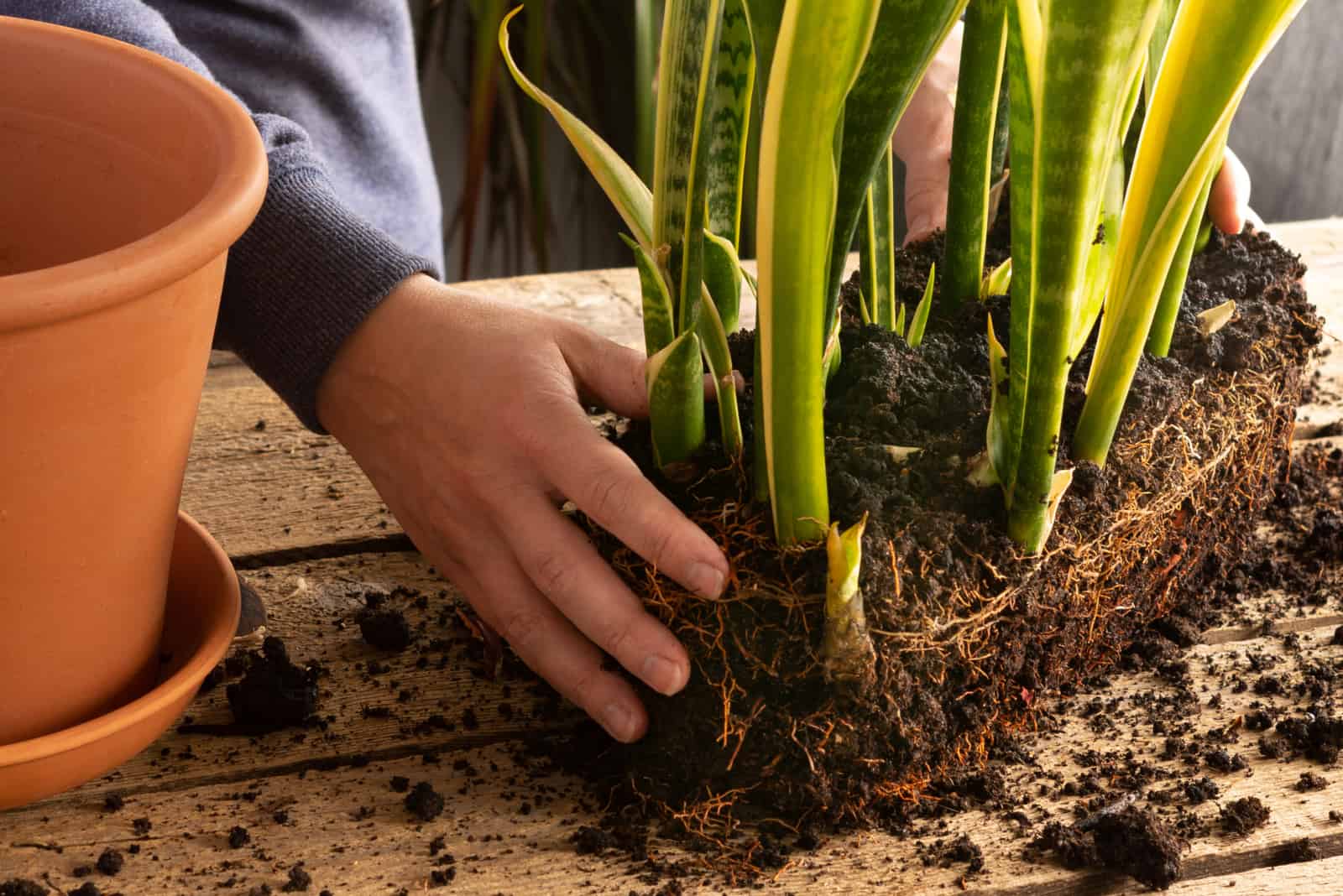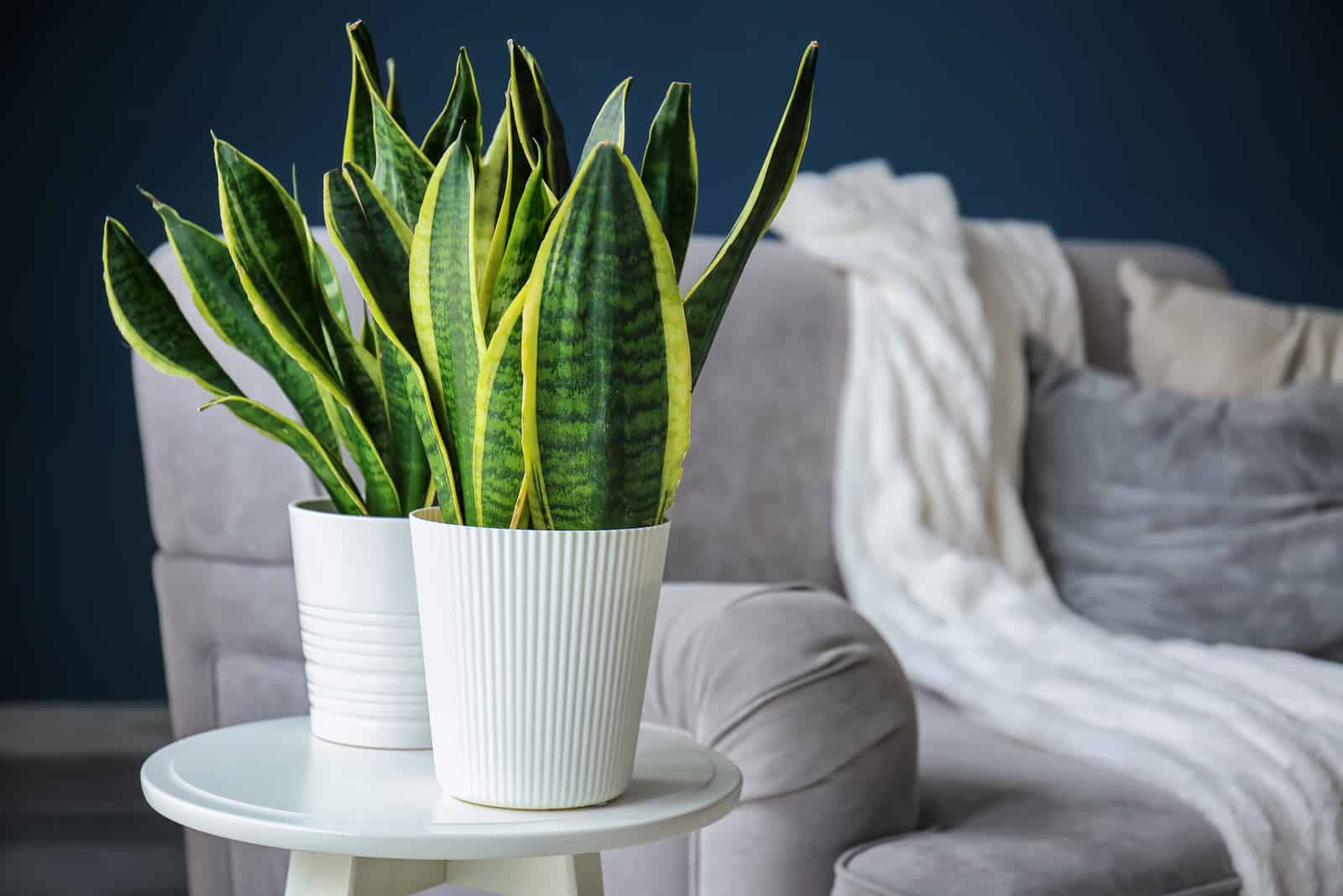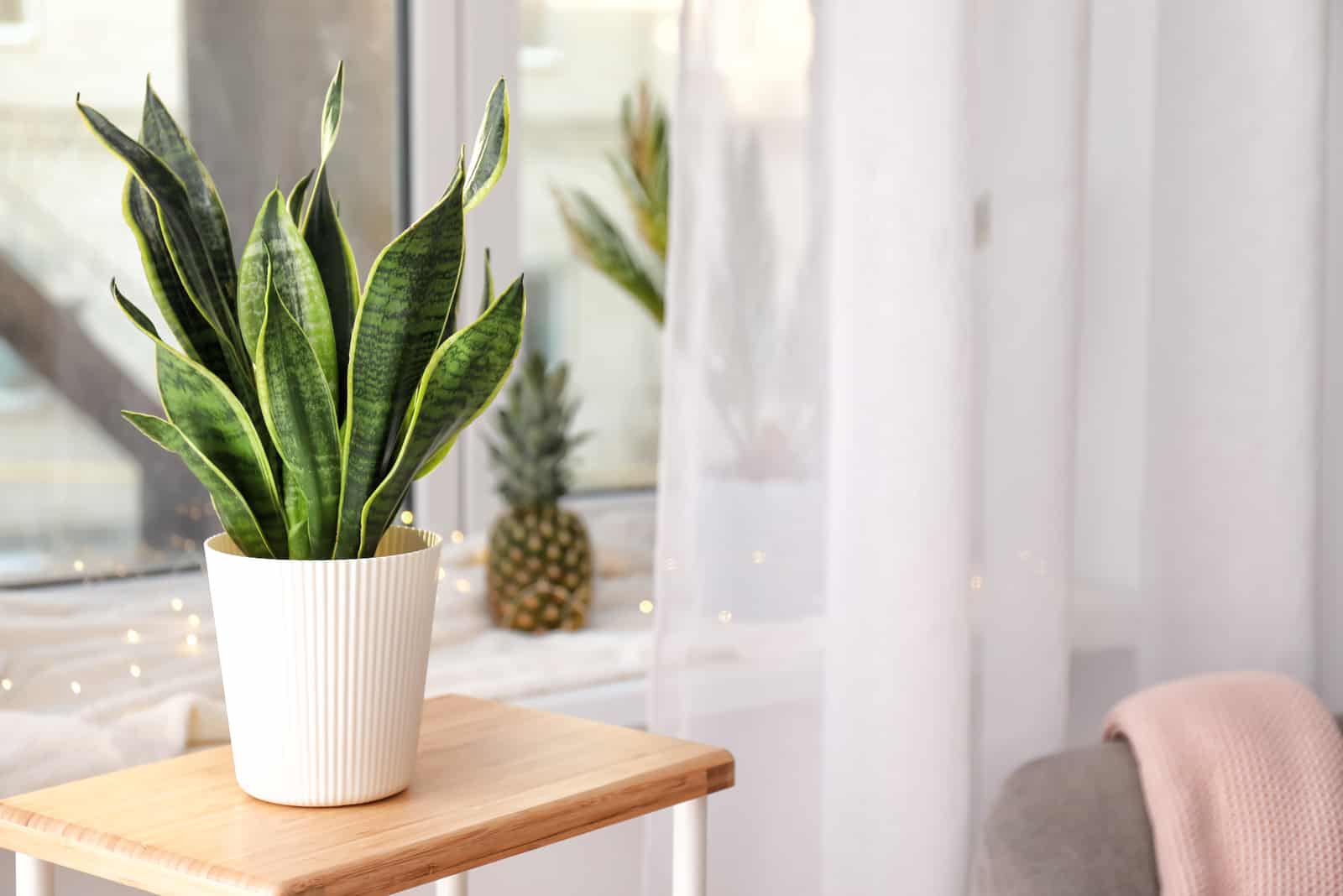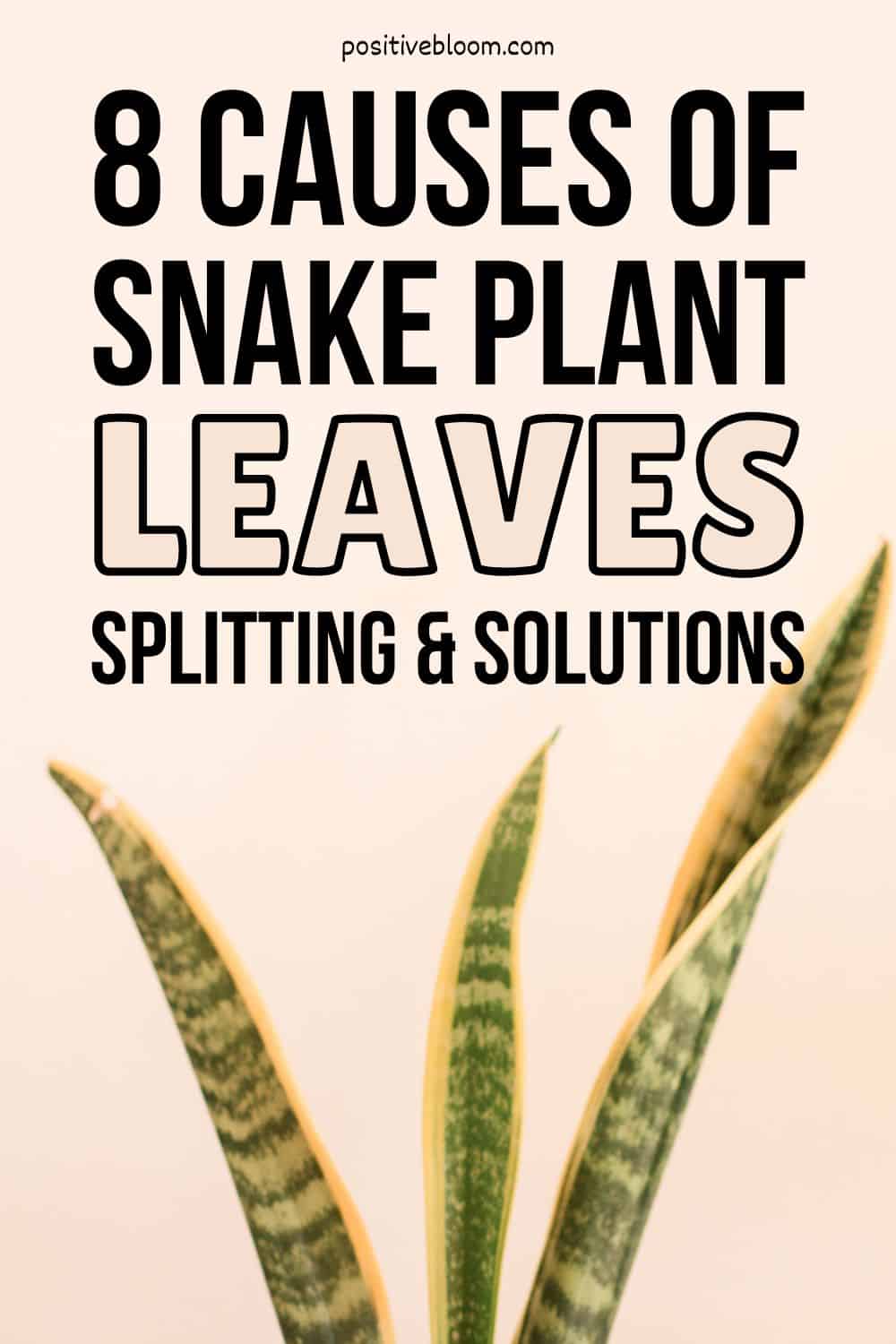The snake plant, or mother-in-law’s tongue, is a plant that’s incredibly easy to maintain, and yet still looks marvelous.
However, they are not resistant to everything and it isn’t uncommon to see snake plant leaves splitting due to incorrect watering, environmental changes, or pest infestations.
That’s why we decided to bring you some causes of this issue, and how to prevent and deal with it if it ever comes to that.
But before we get into the matter, let’s review the main specifics of the snake plant:
[table id=184 /]
Let’s get started!
8 Causes And Solutions To Snake Plant Leaves Splitting
This section contains eight different causes and solutions to the splitting leaves of your favorite houseplant. Some of the leading causes are overwatering, improper humidity levels, and physical damage, but there are some other issues that can taint the beauty of your plant.
Luckily, you can treat most of these issues and save your snake plant from inevitable doom.
Let’s check those causes and solutions!
1. Overwatering
One of the main causes of a snake plant splitting leaves is overwatering. Bear in mind that this plant is a succulent, so it doesn’t need that much water to thrive.
If you give your plant too much water its fleshy leaves will expand, which may not seem like that big of a deal on its own, but add high temperature to it and the problems begin.
Too much water in the leaves and higher temperatures increase transpiration, which causes the leaves of the snake plant to shrink and swell rapidly. This causes damage to the plant’s cells, and they begin to split.
Overwatering is also one of the causes of your snake plant not growing, in addition to the damage made by pests and diseases, too much humidity, not enough nutrients, etc.
It can also lead to another, more serious issue: root rot. If this happens, you can only remove the infected roots, repot your plant, and hope for the best.
Solution To Overwatering
Luckily, there is a solution to this problem. The main thing is not to water your snake plant too often. It is a succulent, so organize a watering schedule and water it thoroughly twice a month during its growing season and once a month during dormancy.
If you notice any splitting leaves or other signs of an overwatered snake plant, such as drooping and yellow leaves, you can repot it in a new container with drainage holes and change the potting mix to something with better drainage.
Finally, you should leave it somewhere dry and remember to empty the saucer after watering your snake plant.
2. Low Humidity
Low humidity is another common cause of damage to your snake plant’s leaves. Remember that this plant is native to tropical Africa, so it is used to high humidity levels.
This means that even though it doesn’t require that much water, it needs plenty of air moisture to develop into a healthy plant.
If humidity levels are low, the plant loses more moisture than it gets from being watered only twice a month and the leaves can become dehydrated. Just like high transpiration, low humidity levels lead to cracking and splitting of the snake plant’s spiky leaves.
Solutions To Low Humidity
Thankfully, there are many ways of increasing humidity indoors. One of the easiest is investing in a quality humidifier, which will keep your plant happy and blend into your home decor.
However, if you want a cheaper solution you can simply mist your plant every day, or place it in a kitchen or a bathroom where the humidity is naturally higher.
You can also make a DIY gravel or pebble tray that fits your room decor nicely and will help your plant at the same time.
Simply find an attractive tray or container, fill it with gravel or pebbles (any small stones will suffice) and water, and put your potted snake on it. Be sure the leaves do not come into contact with the water!
3. Physical Damage (from pets and mishandling)
Indoor plants are susceptible to physical damage, especially from pets and mishandling.
Even though pets don’t do it on purpose, they may damage your plant while playing with it and are the likely culprits of cracks and splits caused in this way.
However, we often place blame without considering that someone else might be in the wrong, and that WE are the cause! We’re not always careful, and might cause some damage to the leaves when moving or repotting the plant.
Solution To Physical Damage
You should choose a location where your pets won’t be able to reach your plants and it still gets proper lighting so you won’t have to move it around as much.
You can install barricades or a small fence so your cats and dogs cannot get near it. You should also try training your pets not to approach this indoor plant for their safety as well because the snake plant is toxic to cats and dogs, according to the ASPCA.
4. Boron Deficiency
Micronutrients are incredibly important for the overall well-being of your plants, and one that snake plants need the most is boron.
We usually pay attention to nitrogen, phosphorus, and potassium, but we overlook the importance of boron. It is responsible for the maintenance of the structural membrane, formation of the cell wall, stability, and sugar transfer, which helps with the general development of the cells.
Lack of boron causes a weaker overall structure of the plant, which often leads to splitting or cracking of the leaves.
Solution To Boron Deficiency
The main reason there might be a boron deficiency in the soil is because it is too acidic or alkaline. You should always check the soil pH level before planting a snake plant. You can get a soil tester to ensure the planting medium is adequate for your sansevieria.
Once you test the soil, you can add either vinegar or lemon for highly alkaline soils or some lime to make the substrate less acidic.
Another thing that can help with your boron-deficiency problem is adding more nutrients to the substrate, so don’t forget to fertilize this plant from time to time.
5. Extreme Changes
Extreme environmental changes are unbelievably dangerous, even though the snake plant is one of the sturdier indoor plants.
You shouldn’t simply take it from humid, low-light conditions and place it on a bright south-facing windowsill. This will inevitably lead to shock, and you’ll notice the splits and cracks appear very soon.
This plant cannot survive in extreme temperatures, whether they’re too high or too low. It thrives in climates with temperatures between 60-80°F (15-27°C), but anything below 50°F (10°C) can do severe damage to the leaves.
Finally, you should pay special attention to this plant when temperatures are freezing in the winter. Take it to a warmer place, but not too warm because it doesn’t respond well to any extreme changes.
Solution To Extreme Changes
The main (and the easiest) thing you can do to avoid cracked leaves due to environmental changes, is to never leave your snake plant below an AC or heater. Sudden temperature changes can lead to damaged leaves very quickly.
When the winter comes, take your plant to a warmer part of your home if it’s absolutely necessary, but if not just leave it be. Your snake plant will be much happier if you don’t move it constantly.
If you keep your snake plant on a windowsill, you can put a shade cloth over it to protect it from direct sunlight and excessive heat.
6. Pest Infestations
The plant care of monstera marmorata is similar to that of a snake plant (except for their water requirements), so it’s not so strange to see them sitting beside one another.
However, their susceptibility to similar pest infestations is another thing that connects them. Unfortunately, snake plants and monstera’s can be attacked by spider mites, mealybugs, aphids, fungus gnats, and more!
These pests feast on leaf sap, which creates barely noticeable cracks that eventually expand and become actual splits.
Thankfully, we know some things that can help beginners and pros alike keep their plants safe.
Solution To Pest Infestations
Plants that are infested by large groups of pests can have a hard time recovering, and sometimes it’s not possible. Therefore, you should check your plants regularly to look for the tiniest bugs because they can do incredible damage!
Remove them by hand if the infestation isn’t large, or turn to neem oil or some other insecticide if you can’t handle it on your own.
Sadly, if the pests have been there for quite some time, pruning is unavoidable. You should remove the highly damaged leaves and infested leaves and destroy them so the pests don’t transfer to your other plants.
7. High Traffic
It might not have ever crossed your mind, but places where you pass all the time during the day aren’t ideal for your snake plant. This means you shouldn’t leave it near your doorway, stairs, or anywhere else people often walk.
Plants don’t mind us passing by, but they do mind when we accidentally damage their leaves and stems, whether we step on them, hit them with a gym bag or a purse, or simply slap them with the backs of our hands accidentally.
Solution To High Traffic
The solution to this problem isn’t complex; simply put your plant somewhere there’s not that much traffic, such as flower shelves, hanging baskets, corners, etc.
It’s important to add that snake plants don’t like constant changes of location, so bear that in mind when looking for the best place to put it. Find a sunny, low-traffic spot and enjoy your healthy, crack-free plant.
How To Prevent Snake Plant Leaves Splitting
Snake plants aren’t that demanding, but there are some things you need to look out for when growing this plant if you want to avoid those unsightly cracks.
It needs bright light, but doesn’t like temperatures that are too high. You don’t need to water it that often, but ensure that you don’t underwater it as it can also lead to problems like wilting and yellowing of the leaves.
Finally, the type of soil and the amount of fertilizer is also important. There are many things to learn about snake plants, and you can’t simply put it in any old place and call it a day!
That’s why we have brought you some helpful care tips to help you place your snake plant, water it properly, and more.
Choose Suitable Location
The location for this plant is very important. Choose a place where your pets cannot reach it and that gets plenty of indirect light. It should also be somewhere you don’t use too often so you don’t accidentally harm your plant.
You have to keep all these things in mind before settling this potted plant.
If you do find a place where the plant can get enough light without burning its leaves, but your cat can easily reach it, you can simply put a fence or some other barrier your pet can’t cross and protect your plant that way.
Use Proper Soil
Proper potting mix is what determines whether or not your plant will grow into a tall and healthy snake plant. Most plants prefer well-draining soils, and the snake plant is no exception.
Proper soil mix is one of the best ways to make your snake plant grow faster, and it also ensures that your snake plant doesn’t wither and die.
You should mix your preferred potting soil with the cactus mix at a 1:1 ratio, and some compost to improve fertility and add much-needed nutrients to the blend. Compost also aids drainage, so it’s definitely an important ingredient!
Adjust The Watering
The snake plant is drought-tolerant, so it doesn’t need the soil to be moist all the time. If you have recently bought your snake plant and it’s still in a small pot, you can give it half a cup (118 ml) of water every two weeks.
However, as your plant grows and develops you’ll have to start repotting it and planting it in larger containers. A snake plant in a medium-size container needs a cup (236 ml) of water once every two weeks, while you should use 1.5 cups (355 ml) of water for large pots.
Once the snake plant enters dormancy, its watering needs are reduced so you can simply water it once a month (using the same amount of water as in the summer, but less frequently).
Finally, you should always check the planting medium before watering, and if it’s still moist you don’t need to water your plant.
Fertilize Your Plant Properly
We’ve seen our fair share of fertilizer burns, so we know how bothersome it can be. Inadequate fertilization can lead to all sorts of problems, but if you do it correctly you can save yourself lots of trouble and enjoy your healthy plant with scratchless leaves.
This plant doesn’t require too much fertilizer, and feeding twice during its growing season is perfectly fine. You can also give it a weak dose of fertilizer in the fall and then stop fertilizing it entirely once the winter comes and the plant enters dormancy.
We also have to add that you should use well-balanced fertilizers such as triple 10, but always dilute them so you don’t damage your plant.
Research The Plant’s Needs
You might not deem it necessary, but researching your plant’s needs is essential. Getting to know its requirements can help you keep it healthy and reduce your work as there’ll be fewer issues to deal with.
You can research the snake plant online or talk to a florist and plan a care guide. See what kind of pot it needs, how long the plant can tolerate excess water, and so on. You can do this for every plant, not just the mother-in-law’s tongue.
Pay Attention To Your Plant
Finally, you should never forget to check up on your plant. Many problems that this plant suffers from can easily be fixed if caught early.
Look for anything out of the ordinary, and if your plant seems somewhat sad and starts wilting after a change of location, put it back in its usual place.
What To Do About Snake Plant Leaves Splitting?
The snake plant clearly has its disadvantages, but it is still worth having one around due to its air-purifying abilities, Feng Shui, and amazing looks.
However, once its leaves start splitting and cracking that look is tainted. You can prune these leaves or use them to propagate your snake plant and grow even more of these beauties.
The split leaves will eventually wilt and die, so they won’t be a nuisance for long. If the splits were made by pests or diseases, the best thing you can do is cut them away to make space for new growth.
Q&A Corner
We’ve talked about the common reasons for snake plant leaves splitting and what you can do to prevent it from happening.
However, there are still some unanswered questions about this topic that require our attention. Therefore, we decided to answer some of the most commonly asked questions to help you grow a healthy snake plant, or bring one back to life, in no time!
Will broken snake plant leaves grow back?
Broken snake plant leaves can grow back, but they need time. As the plant heals, the split leaves will wither and drop so you can enjoy your plant’s beauty once again.
Why do my snake plant leaves have brown tips?
Another common issue with snake plants are brown tips, and the most common reasons are overwatering or underwatering.
Simply check the soil to establish the cause, then either stop watering your plant for a while or give it a good soak.
Your snake plant’s leaves can also turn brown due to too much sunlight. If you keep it on a windowsill, you can try moving it a few feet away from the window. The spiky leaves will still get enough light, only it won’t be direct and cause damage.
Finally, the presence of pests, especially mealybugs, can lead to the browning of the plant’s tips. These insects feed on the plant’s sap and can quickly steal its moisture and nutrients, resulting in brown tips.
Luckily, you can get rid of them using pesticides to keep your plant in top shape.
What is the best way to remove snake plant leaves?
The best way to prune snake plants is with a sterilized, sharp knife or garden shears, and cut as closely to the base of the plant as possible.
You can remove dead or dying leaves, split or yellow ones, and even healthy ones if you wish to reduce your plant’s size.
Final Thoughts
This article brought you eight causes of snake plant leaves splitting. It also included the solutions and preventive measures for these problems so you don’t have to experience them ever again.
Now you also know what to do about those leaves, whether it’s to just leave them be or prune them.
Finally, we brought you some answers to the questions we’ve been asked most frequently so you can stop wondering what’s causing those brown tips on your plants and how to fix them.
Until next time!
Like this post? Share or pin it for later!

